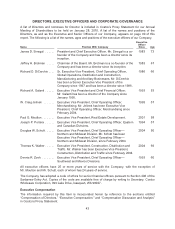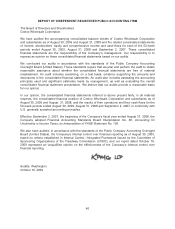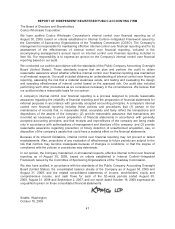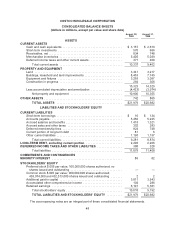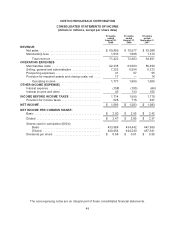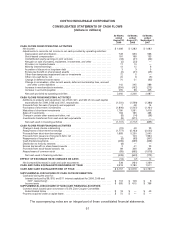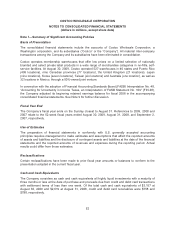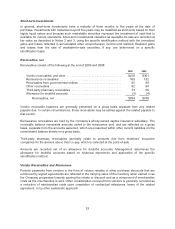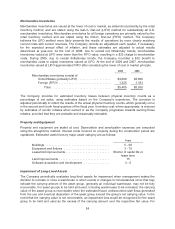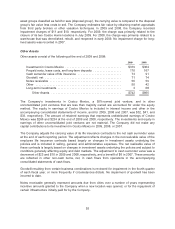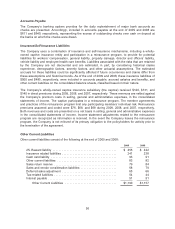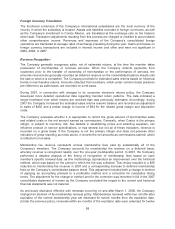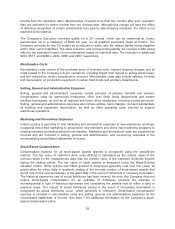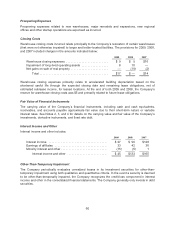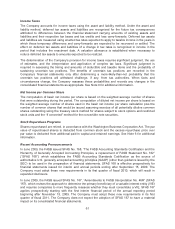Costco 2009 Annual Report Download - page 55
Download and view the complete annual report
Please find page 55 of the 2009 Costco annual report below. You can navigate through the pages in the report by either clicking on the pages listed below, or by using the keyword search tool below to find specific information within the annual report.
Short-term Investments
In general, short-term investments have a maturity of three months to five years at the date of
purchase. Investments with maturities beyond five years may be classified as short-term based on their
highly liquid nature and because such marketable securities represent the investment of cash that is
available for current operations. Short-term investments classified as available-for-sale are recorded at
fair value as described in Notes 2 and 3, using the specific identification method with the unrealized
gains and losses reflected in accumulated other comprehensive income until realized. Realized gains
and losses from the sale of available-for-sale securities, if any, are determined on a specific
identification basis.
Receivables, net
Receivables consist of the following at the end of 2009 and 2008:
2009 2008
Vendor receivables, and other ................................... $418 $361
Reinsurance receivables ........................................ 169 152
Receivables from governmental entities ........................... 95 89
Other receivables ............................................. 82 84
Third-party pharmacy receivables ................................ 73 66
Allowance for doubtful accounts .................................. (3) (4)
Receivables, net .......................................... $834 $748
Vendor receivable balances are generally presented on a gross basis separate from any related
payable due. In certain circumstances, these receivables may be settled against the related payable to
that vendor.
Reinsurance receivables are held by the Company’s wholly-owned captive insurance subsidiary. The
receivable balance represents amounts ceded to the reinsurance pool, and are reflected on a gross
basis, separate from the amounts assumed, which are presented within other current liabilities on the
consolidated balance sheets on a gross basis.
Third-party pharmacy receivables generally relate to amounts due from members’ insurance
companies for the amount above their co-pay, which is collected at the point-of-sale.
Amounts are recorded net of an allowance for doubtful accounts. Management determines the
allowance for doubtful accounts based on historical experience and application of the specific
identification method.
Vendor Receivables and Allowances
Periodic payments from vendors in the form of volume rebates or other purchase discounts that are
evidenced by signed agreements are reflected in the carrying value of the inventory when earned or as
the Company progresses towards earning the rebate or discount and as a component of merchandise
costs as the merchandise is sold. Other consideration received from vendors is generally recorded as
a reduction of merchandise costs upon completion of contractual milestones, terms of the related
agreement, or by other systematic approach.
53


